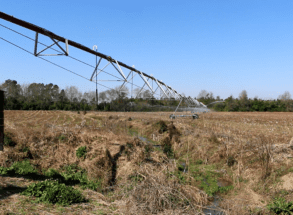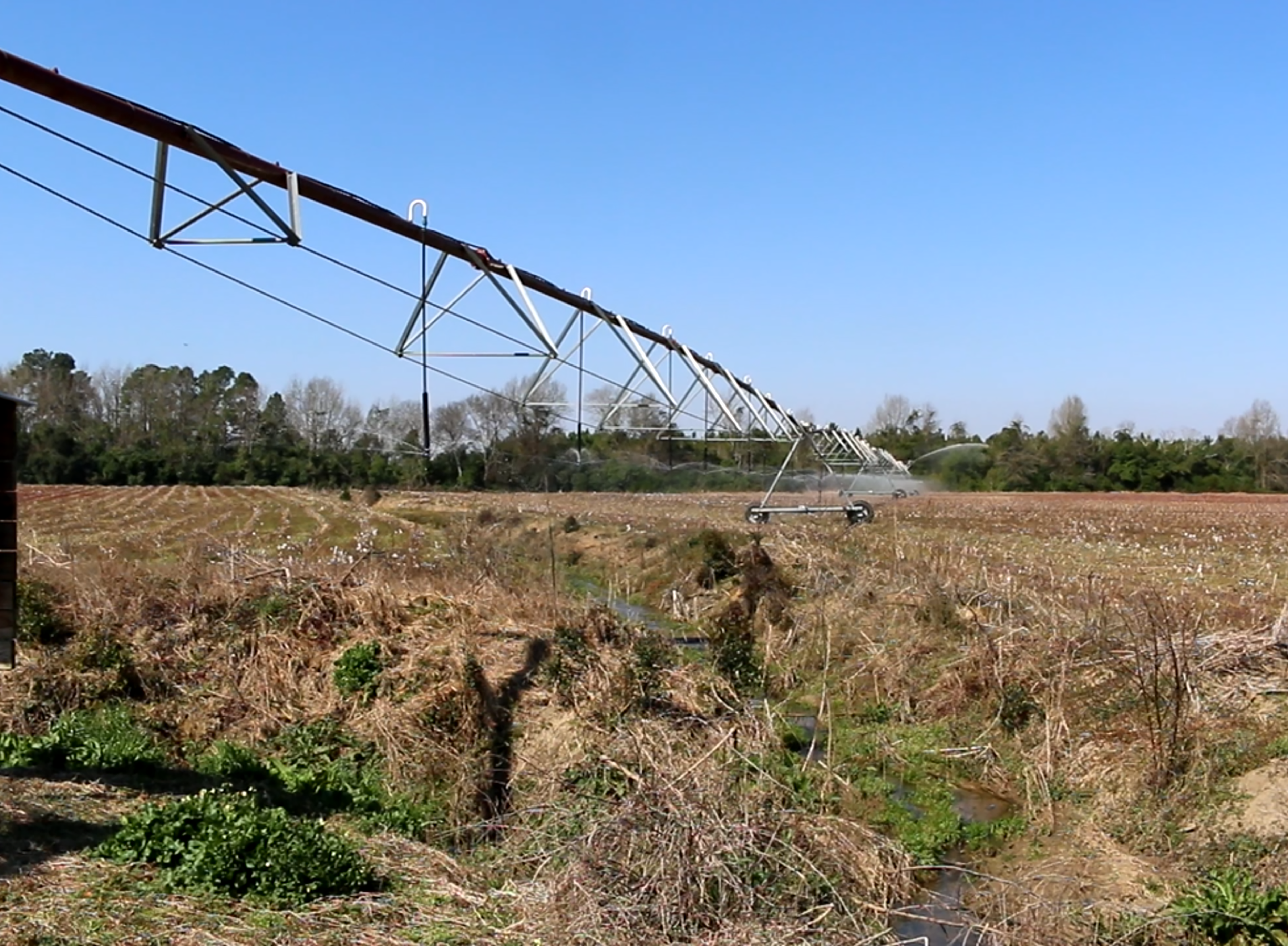Convenience is what we had in mind when we developed these calculators.
– Kendall Kirk, precision agriculture engineer
Farmers using the Clemson University Center Pivot and Drip Fertigation web-based calculators now have another tool to help them optimize liquid fertilizers used to feed crops through irrigation systems.

The Liquid Fertilizer Solution Calculator app is designed to help agricultural producers calculate nutrient composition and density of liquid fertilizers when mixing their own liquid solutions from water-soluble fertilizers to fertilize crops, or fertigate, through irrigation systems.
Kendall Kirk, a Clemson precision agriculture engineer housed at the Edisto Research and Education Center in Blackville, South Carolina, said the app is user-friendly and can be accessed anywhere internet is available on smartphones, tablets and computers, as well as other devices that have internet capabilities.
“Convenience is what we had in mind when we developed these calculators,” Kirk said.
Released in late 2020, the Center Pivot Fertigation Calculator is designed to help producers make more precise fertilizer applications by assisting in calculating liquid fertilizer flow rate and injection pump settings needed to fertigate through a center pivot irrigation system. The Clemson Drip Fertigation Calculator is designed to help South Carolina vegetable producers make more precise fertilizer applications through drip irrigation systems.
After producers started using the center pivot and drip fertigation calculators, Zack Snipes, assistant program leader for the Clemson Cooperative Extension Service horticulture team and area horticulture agent, noted many were beginning to ask what they should do if using a greenhouse-grade solid fertilizer and putting it into a solution. In response, Rob Last, area horticulture agent, built a spreadsheet that became the basis for the Liquid Fertilizer Solution Calculator.
“We have created a system that provides quick calculations and is really easy to use,” Last said. “Anyone who has questions about these calculators can contact me or Zack and we’ll help them.”
Last can be contacted at rlast@clemson.edu and Snipes can be contacted at zbsnipe@clemson.edu.
To use the Liquid Fertilizer Solution Calculator, producers define a starting water volume and then select up to three water-soluble fertilizers for calculation of their solution. Beginning in Step 2 of the calculator, fertilizer products can be defined.
“Several commercially-available fertilizers are built into the calculator from which to select, or producers can use custom fertilizers that aren’t on the list by entering nutrient compositions – nitrogen, phosphorus, potassium (N, P2O5, K2O) and micronutrients – from the labels,” Kirk said. “Producers input weights of each fertilizer added to the solution and the calculator does the rest, returning the final formulation, density and volume of the liquid solution.”
For many fertilizers on the built-in list, the calculator has maximum solubility data factored in to warn users if the concentration they’re trying to use exceeds maximum solubility of the product.
“Everything is calculated in real-time, so tweaking the recipe is as easy as changing a value,” Kirk said.
To determine nutrient composition, Kirk said users generally must just know the target volume for the batch they’re mixing and the nutrient composition of the soluble fertilizer they’re using, which will be marked on the label.
“Users should be aware that the final solution volume will exceed the starting water volume,” he said. “If bulk density is known, the calculator will not only show them the weight of fertilizer to add to the solution, but also the volume, for example in cups or quarts; this is handy for when a scale is not available.”
Upon completion, liquid solutions developed can be directly pushed to the pivot fertigation calculator and the drip fertigation calculator.
The developers say the option to make their own liquid solution recipes gives producers and growers some flexibility.
“Even if not limited in selection, cost per unit nutrient mass is generally more than double when purchasing liquid concentrates, as compared to purchasing soluble fertilizers,” said Justin Ballew, Clemson commercial horticulture agent.
The new Liquid Fertilizer Solution Calculator as well as all Clemson Precision Agriculture calculators and web apps can be found at https://www.clemson.edu/extension/agronomy/PrecisionAgriculture/calculators/index.html.
-END-
Get in touch and we will connect you with the author or another expert.
Or email us at news@clemson.edu

